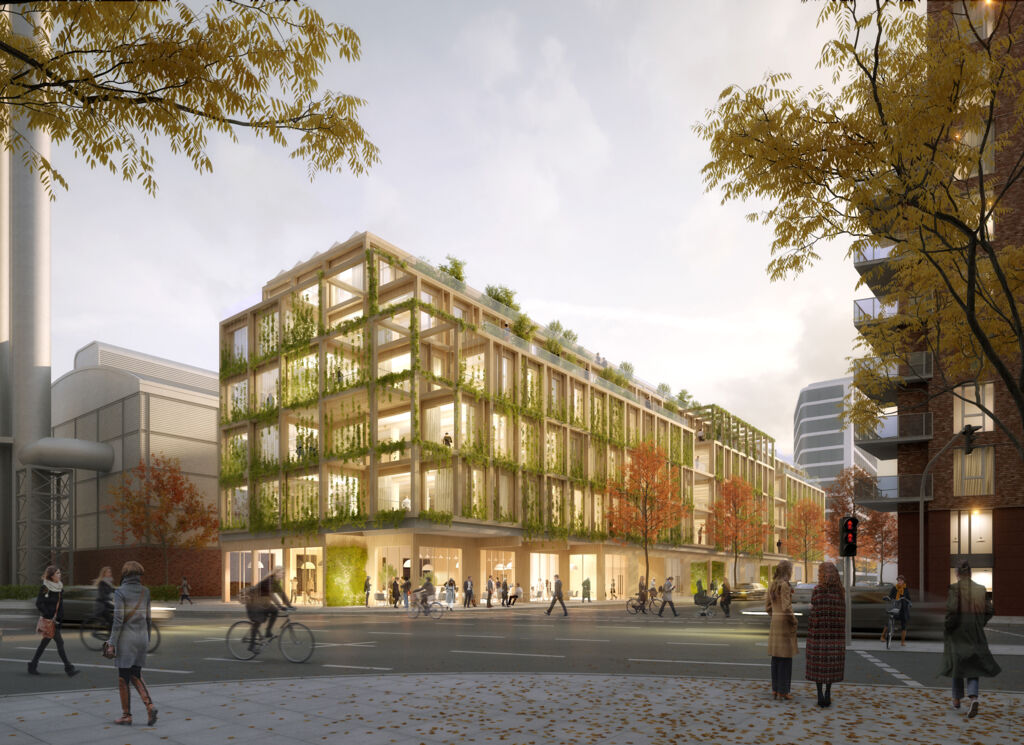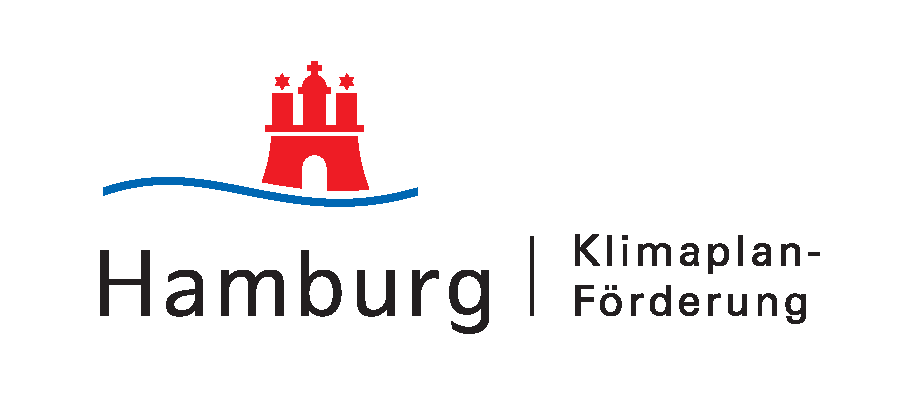The "Null Emissionshaus"
The "Null Emissionshaus" in HafenCity
In view of global climate-ecological challenges, the topic of sustainable construction has increasingly become a matter of public awareness. As an urban development company, HafenCity Hamburg GmbH has been working for many years on future strategies that initiate and promote innovative and sustainable construction. Various lighthouse projects have been developed in HafenCity that show how ecologically sustainable solutions can be put into practice.
One of these projects is the "Null Emissionshaus", which HafenCity Hamburg GmbH is building itself. As the german name suggests, the office building will be CO2-neutral over its entire life cycle - from construction and operation to potential dismantling and disposal. This ambitious sustainability concept makes the building a pioneer in Europe.

Special features
The "Null Emissionshaus" is being built at the intersection of San-Francisco-Straße and Am Dalmannkai and closes the last urban development gap in western HafenCity. From the very beginning, the origin of the materials, the operation of the building and its subsequent dismantling and reuse were incorporated into the planning in accordance with the principles of circular construction. The entire construction above the first floor is designed as a modular timber building. Extensive greenery on the façade helps to improve the microclimate. Roof terraces are planned for communal use on around 30 percent of the roof area, while 60 percent of the roof area is greened. In addition, the south façade and roof area will be covered with photovoltaic modules to generate solar energy. Last but not least, the building will not have any parking spaces for cars; instead, the "Null Emissionshaus" will provide up to 150 bicycle parking spaces to encourage environmentally friendly mobility.
The construction of the building requires holistic planning. This means that disciplines such as architecture, building services and building physics are developed in close interaction with each other. Building Information Modeling (BIM), a method for networked planning, is an essential working basis. The BIM model serves as a digital twin of the "Null Emissionshaus". It can be used, for example, to track photovoltaic yields, daylight inputs or an accompanying life cycle assessment.
CO2 neutrality in the life cycle
In the production of buildings, a large proportion of CO2 emissions are already generated in the processes upstream of construction and therefore well before the operating phase. In addition, the construction and operation of buildings is generally associated with a high consumption of resources such as land, water, energy and raw materials.
This is where sustainable building concepts come in. Looking at the entire life cycle of a building, there are various levers that can be positively influenced in terms of sustainability. These relate to aspects such as the use of renewable and recycled materials, options for generating energy close to the building or nature-based solutions to improve the microclimate and protect biodiversity.

The project is supported by the Hamburger Klimaplanförderung.